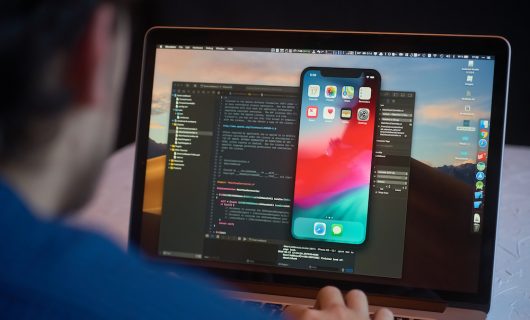Do you know what is the time and cost to develop a custom mobile or web app? Considering the high demand for custom apps in today’s market, it is no wonder that many people are wondering what the cost of this service will be. In this blog post, we’ll talk about some factors that can affect your project budget and give you tips on keeping your development costs down to satisfy your business needs.
How to start developing a custom app
Step 1: Define the business goals
Before we get into the cost factors, it is essential to note that you need a well-defined scope of work, even for your custom mobile app or web app. Remember that you should first define the business goals of your app and the audience you are targeting. It is also a good idea to plan for future changes, as they will inevitably happen at some point.
Step 2: Conduct market research
Next, you’ll want to conduct market research. The goal of this is to identify your competitors and get a sense of which features will be most appealing. This phase may also include usability testing or customer interviews, depending on the type of mobile app or web app you’re building.
Step 3: Consider the features and functionality
You’ll want to consider the features and functionality right from the beginning so that everything can be planned out in advance. This will ensure that there are no surprises later on during development when unexpected cost factors show up because they weren’t accounted for initially.
Step 4: Begin crafting a development strategy blueprint
Once these things are done, it’s time to think about your development strategy. You have two options: build an in-house development team with employees from different departments (development, design) or outsource the work through freelance developers or offshore teams. After this stage, it’s time to assemble the team that can help turn these goals into reality. This team will include product managers, designers, developers, and testers who all play an essential role.
What type of team do I need for custom mobile app development?
The development team involved in building custom applications depends on various factors such as the development language you’re using, your team’s size and skillset, and whether you need to bring in an agency.
For example, suppose you want to build a custom application without any programming knowledge. In that case, a company specializing in custom software might be able to do everything for you, from designing it through developing and deploying the app. In these cases, we recommend talking directly about your project needs with your agency.
The typical roles on the development team are:
Project Manager
In charge of project management, including getting the work done on time and within budget. He or she coordinates between team members to ensure that their tasks are aligned with what needs to be done. The PM may also create timelines for each task and keep track of milestones in the development process.
Technical Lead
This person is usually an expert in a specific programming language or framework that he/she uses and other technical aspects such as databases, web servers, etc. Tasks include providing design feedback about how best to implement the software architecture and ensuring that everything works correctly by testing it before deployment.
Software Developer
These are the people who write code for new features and enhancements to an app. They create all of the programming logic that makes up your application’s functionality, including performing any necessary database operations or communication with external systems (such as sending email).
QA (Quality Assurance) Engineer
The person in charge of testing whether changes made by developers work correctly on different devices and browsers. This includes everything from ensuring that a mobile app button doesn’t have text cut off when it displays on iPhones to making sure users can complete critical tasks without crashing. QA engineers will also document bugs found during their testing process so they can be corrected quickly.
UX/UI Designer
The person who designs how a mobile app or web app looks and feels. They’re in charge of the visual design, including icons, color schemes, graphics that appear onscreen when you use the application (commonly called “user interface” or UI), as well as any changes to your mobile web site’s appearance to match what customers will see on their devices.
Is creating an app expensive?
The cost of mobile app development can vary dramatically. The best way to answer the question, how much does it cost, is by taking the time to write down what you want your application for and then consult with a developer about their prices.
If you are on a budget, there are plenty of free or inexpensive mobile application builders that may meet your needs. If not, keep in mind that different types of apps have vastly different price points: from $10,000 for an individual web-based project up to upwards of millions if developing native iOS/Android apps which require custom hardware certification testing.
The following factors impact the cost:
Size and complexity
The more screens or pages you want, the more time it takes to build. The complexity level also impacts the price range, which means choosing between a simple, inexpensive app or a robust system that’s more expensive.
Integration with external systems
Most apps these days need to connect with an external system such as a database, CRM, or other software to work. If you want your app to integrate with these systems, be prepared for the cost of development and testing to increase. If you’re bringing in services such as push notifications or e-commerce, the cost can exceed $300K.
Migrate existing data
If you already have an application, you’ll need to migrate the data from that app into your new one. This process can take a lot of time, depending on the size and complexity of your existing application. Sometimes the data being ported needs to be reformatted into a different data type, which takes time and may require specialized tools.
Hardware requirements
Building an IoT (Internet of Things) project that relies on sensors or other hardware for data collection? You’ll need to purchase, configure and install the necessary equipment. Getting data from external sensors into your app can be tricky, and you may need to hire a skilled developer who specializes in hardware programming.
Is there a difference between custom mobile app development and custom web app development?
Mobile app development has to focus more on making sure the interface is optimized for a smaller screen and touch-based input, while web apps are more focused on access on any browser. Understanding the difference between custom mobile app development and custom web app development can be a little tricky. Still, it’s essential to know that they require different skill sets, just like building an Android app requires a different type of developer than building an iOS app.
The best part about a custom mobile app, sometimes referred to as native app development, is that it’s more targeted to the individual user. Hence, you get a personalized experience based on their platform of choice. Due to all of these specific needs that mobile apps have, they’re usually pricier than web apps because you may need to develop two different apps, one for iOS and one for Android. However, technologies such as Ionic React, React Native, Vue Native, etc. that allow you to do mobile app development that will work on both iOS and Android.
The best part about a web app is that it’s much more cost-effective to develop and maintain because the code is straightforward. It doesn’t have some of the constraints that mobile apps do, which means you can easily create an app with a broader reach than one for iOS or Android since it can be accessed through a browser.
How long does it take to develop software?
This is tough to answer because it depends on the product. This question can be answered more specifically with further questions, such as what kind of software and for what purpose?
The typical process will have a project manager present an overview of the scope of work, which includes: research phase, requirements gathering phase (which has documentation), design prototype development phase (wireframes or mockups), final programming implementation, and testing stage. The last step in this process is deployment planning – determining how best to deploy your application both internally and externally.
Generally speaking, though, custom app development time ranges from one month to two years, depending on size and complexity.
Other factors contribute to the time of custom app development, such as:
- What kind of software do you need? Is it web-only or native mobile (iOS/Android) or both?
- How many team members are on your project to develop your application?
- Do you or your agency have any previous experience developing applications that can be reused for this project?
- How much time does the developer need to spend on research before starting work on design prototypes and final programming implementation?
What is the hourly rate for software development?
Custom app development, whether a mobile app or web app, can vary depending on where the developers are located, and costs differ worldwide.
Development in the United States costs the most, with an average cost of $80-$250 per hour, with mobile app development being on the higher end of that range.
Prices for development in South America, in countries such as Colombia, Brazil, Argentina, Mexico, etc., are mid-range with an average cost of $50-$125 per hour. This is primarily due to rising living costs and time zone alignment with the US.
Easter European app development prices are not the lowest but a good option with an average cost of $40-$150 per hour.
Asian countries like India and Vietnam have the least expensive development costs, with an average price of $10-$75 per hour.
App development costs are constantly changing based on market demand, so factors such as these should be considered when deciding where to go for custom app development services.
Since development prices vary by country, we recommend talking to your developers about how they charge and what their experience is like so you can get a better idea of how much it costs before signing on any dotted lines.
Don’t just go with the cheapest option either, because a less experienced developer may take more time and end up costing you much more than what they’re charging you.
How is software cost calculated?
To calculate the costs of custom software, the first thing to consider is how many hours will be needed. This can vary depending on the complexity of your project and any requirements you want for it.
For example, a simple website may only need about six hours, whereas an advanced web app might take up to 150-200 hours.
A software architect can charge anywhere from $80 to over $200 per hour. A mobile app developer with a lower level of experience could be in the range of about $50-$70 hourly, while an experienced mobile app builder can charge around $130 or more.
Since there may be costs from non-developers, such as UX/UI design, you may want to consider adding between 15-20% for those costs as well.
If the project scope is well defined, your agency should give you an estimate, including the different people on the team. They will break down the requirements and tasks, the hours needed for each one, and give you an estimate.
What is time and materials vs. fixed bid?
Time and materials means that your agency will charge based on their time spent on the work or their quoted hourly rate plus any expenses incurred for the labor.
A fixed bid refers to the cost you’ll pay no matter the hours it takes to complete a project.
One of the issues with time and materials pricing is that it can be challenging to estimate because you don’t know how long a project will take. You may want to ask the agency what their standard turnaround time is for projects like yours, which way they usually bill under this type of arrangement, whether there were any changes in expenses since your quote was given, and make sure you have a payment schedule outlined before starting the work.
Time-and-materials models can also include milestones at specific points during the project’s development, requiring payments before proceeding further. This type of contract may make sense if risk factors exist since they offer financial protection for both parties.
Although a fixed bid may be favorable because of its predictability, time and materials pricing may be more suitable if you are unsure about the scope of your project. Some fixed bid projects run into issues when the scope changes, which can be a problem if the job has already started. To get a proper fixed bid, your agency needs to know your needs and the scope of work, so there is a more significant upfront effort required to define the requirements very granularly. If you have not developed software before, it is wise to take the time to understand what you are getting into before committing fully.
If there are any changes in your project that could affect the cost, let your web development company know as soon as possible so they can adjust their quote accordingly and provide a revised estimate of the expenses for work needed.
Also, think about whether you will require any custom programming or other highly specialized services needed by your project; this could make up some high costs over time, even though it does not appear like so at first glance.
How much does it cost to maintain software?
After building the mobile app or web app, you’ll want to know its costs to maintain the software. You need to understand that this figure does not include any new updates, enhancements, or other customizations.
The maintenance cost will be calculated based on how often the app needs updating and what type of updates are being done (bug fixes, patches). The frequency can range from an update every few months to having no scheduled release dates at all.
Maintenance fees typically cover user support services and third-party integrations such as payment gateways or social media plug-ins; however, these fees may vary depending on each company’s pricing model.
Therefore there is no one size fits all answer for this question when determining how much maintaining your custom mobile app will cost.
Why does software development take so long?
The reason why it takes so long is that there are surprises that inevitably pop up. Software development is not an exact science. When building a custom app, many unknowns can affect development cost and how long it takes to develop your mobile app.
Developers need your feedback to build the app correctly, but that can lead to unexpected complications along the way if you do not know what you want precisely or change your mind once you see the app.
The development team needs precise specifications and requirements for an application before they start building it, which will help reduce the cost of development by creating a plan upfront, so there are no surprises on either end.
For example, a developer may have already built a similar mobile app and is familiar with how long it takes them to develop; however, that time frame might be different from your project because you’re asking for something new or adding more features than their previous work included.
How can I keep my custom app development costs down?
The best way to save money on developing a custom application is by taking advantage of some of the cost-saving features available in software today. For example, think about using an agile approach for development or using Agile Development environments like Jira. These tools have been created by keeping budgets in mind so that you can take advantage of their power without breaking the bank. They also eliminate unnecessary overhead such as planning meetings which are often considered overkill when it comes to custom applications because they’re just too specific at this stage. This creates more efficiency in your development process.
Another way to keep costs down is to consider outsourcing your custom application development. This is a great way to cut down on costs because the person or company you’re hiring has the experience and usually does more for less money. Different models impact price, such as on-shore, offshore, and nearshore, if you choose to outsource.
Conclusion
If you are considering a custom mobile app or web application, make sure to keep your budget in mind. Be prepared for the cost of developing an app may be higher than what you would have thought, and that it can take longer than expected too. Remember that the cost of a custom web or mobile app is not set in stone, and it can vary depending on what you need.
If you want to save money with your project budgets by finding ways to cut costs while still maintaining the quality of your final product, contact us today! Our team has years of experience helping clients develop apps tailored for them and their needs without breaking the bank. We’re happy to share our knowledge with you to make an informed decision about how much it will cost for your next project.



